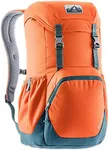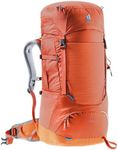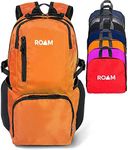Buying Guide for the Best Youth Backpacking Packs
Choosing the right youth backpacking pack is crucial for ensuring comfort, safety, and enjoyment during outdoor adventures. The right pack will fit well, distribute weight evenly, and have the necessary features for the type of trips your young adventurer will be taking. Here are some key specifications to consider when selecting a youth backpacking pack.CapacityCapacity refers to the volume of the backpack, usually measured in liters. This spec is important because it determines how much gear and supplies the pack can hold. For short trips or day hikes, a smaller capacity (20-40 liters) is sufficient. For multi-day trips, a medium capacity (40-60 liters) is ideal. For extended trips or when carrying more gear, a larger capacity (60+ liters) may be necessary. Consider the length and type of trips your child will be taking to choose the right capacity.
Fit and AdjustabilityFit and adjustability are crucial for comfort and preventing injury. A well-fitting pack will have adjustable shoulder straps, hip belts, and load lifters to ensure the weight is distributed evenly. Look for packs with adjustable torso lengths to accommodate growth. To find the right fit, measure your child's torso length and compare it to the pack's specifications. Ensure the pack can be adjusted to fit snugly and comfortably.
WeightThe weight of the backpack itself is important because it adds to the total load your child will carry. Lighter packs are generally more comfortable, but they may sacrifice some durability or features. Packs typically range from ultralight (under 2 pounds) to heavy-duty (over 5 pounds). Consider the balance between weight and durability based on the type of trips and the amount of gear your child will carry. For younger or smaller children, a lighter pack is usually better.
Frame TypeBackpacks can have internal frames, external frames, or no frame at all. Internal frame packs are more common and offer better weight distribution and stability, making them suitable for most backpacking trips. External frame packs provide better ventilation and are good for carrying heavy loads on well-defined trails. Frameless packs are lightweight and flexible but are best for lighter loads and shorter trips. Choose the frame type based on the expected load and terrain.
Pockets and OrganizationPockets and organization features help keep gear accessible and organized. Look for packs with multiple compartments, including side pockets, front pockets, and hip belt pockets. Hydration reservoir sleeves and external attachment points for gear like trekking poles or sleeping bags can also be useful. Consider your child's packing style and the type of gear they will carry to determine the best pocket and organization features.
Durability and MaterialThe durability and material of the backpack affect its longevity and performance. Packs made from high-denier nylon or polyester are more durable and resistant to wear and tear. Reinforced stitching and quality zippers also contribute to durability. While more durable packs may be heavier, they are better suited for rugged use. Consider the expected frequency and intensity of use to choose a pack with the right balance of durability and weight.
VentilationVentilation is important for comfort, especially during warm weather or strenuous hikes. Packs with mesh back panels, ventilation channels, or suspended mesh systems help keep the back cool and reduce sweating. If your child will be hiking in hot climates or tends to sweat a lot, look for packs with good ventilation features to enhance comfort.




















